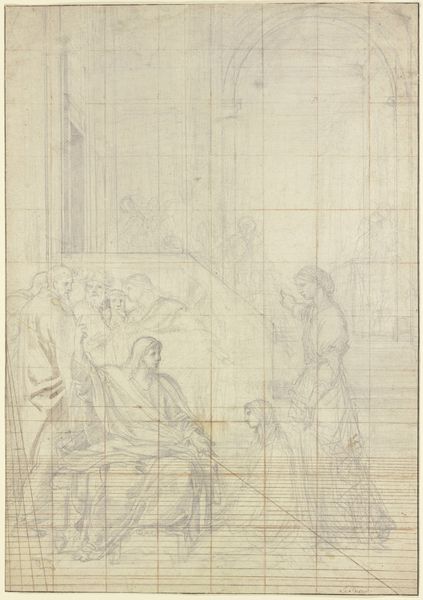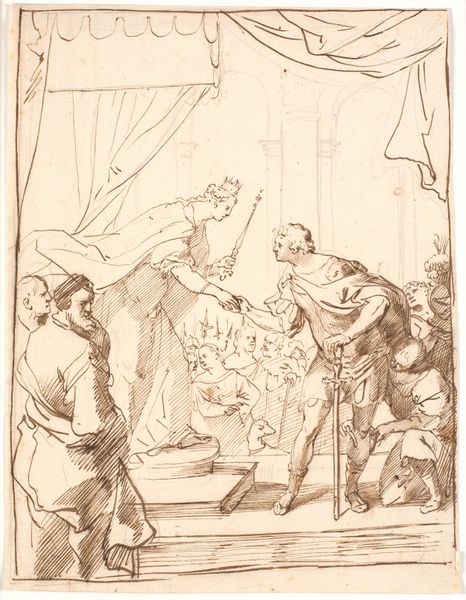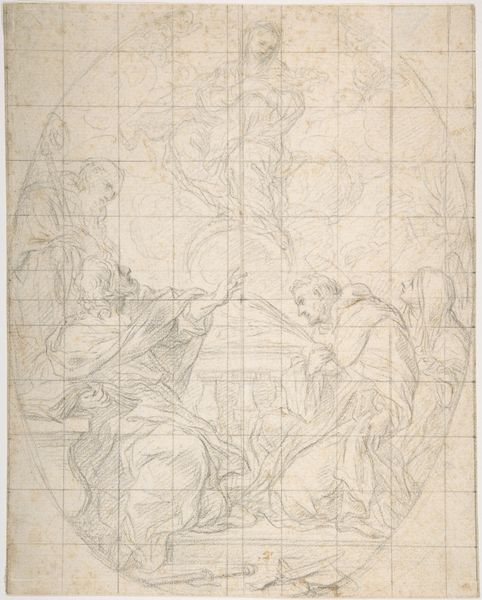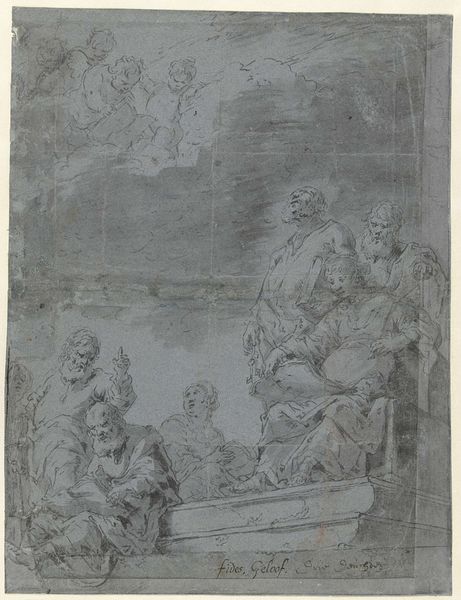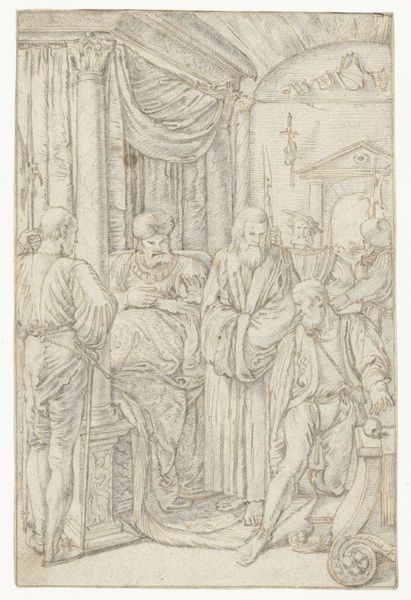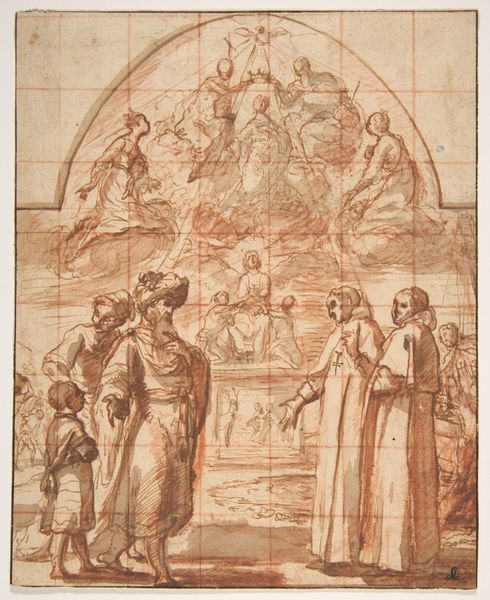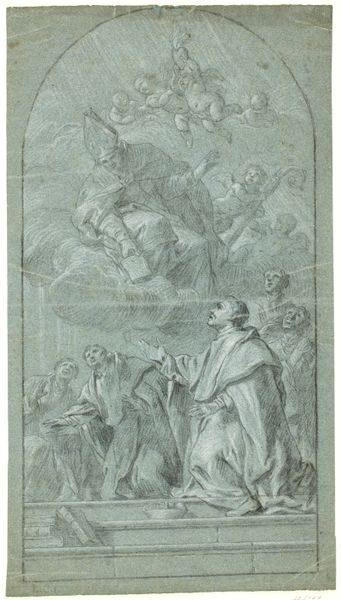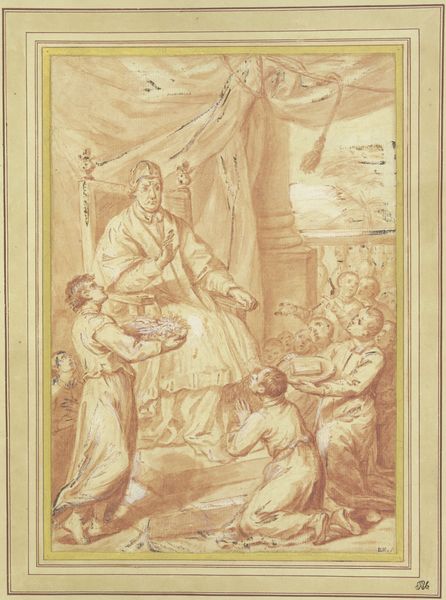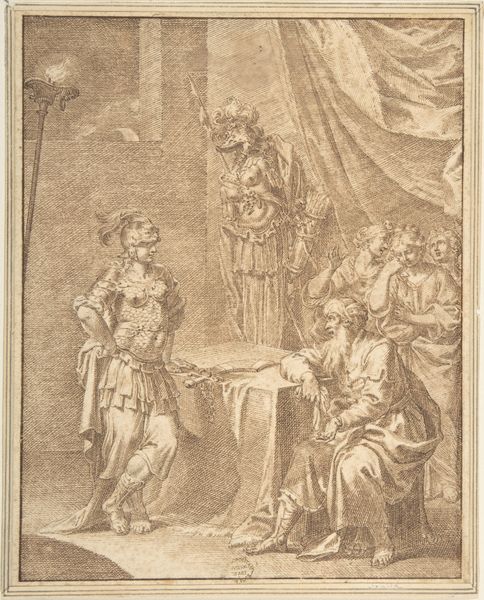
drawing, ink, pencil, chalk
#
drawing
#
baroque
#
ink
#
pencil
#
chalk
#
history-painting
Copyright: Public Domain
Curator: This captivating work is entitled "Salomon und die Königin von Saba" or "Solomon and the Queen of Sheba", crafted around 1650 by Eustache Le Sueur. It's currently held in the Städel Museum's collection and rendered in pencil, chalk, and ink. Editor: The unfinished nature of the drawing is immediately striking, almost as if witnessing the creation of the image itself. And those repeated lion forms along the stairs… there's an almost dreamlike quality. Curator: Indeed. Le Sueur, a prominent figure in French Baroque painting, was deeply engaged with the artistic politics of his era. This drawing allows us to see the foundations of grand history paintings favored at the time. Notice how the use of the grid suggests the composition of the original was quite calculated. Editor: Grids are like maps, providing access to the internal workings of the painting. The presence of these repeated lion images are a clear symbol of power and royalty and point directly toward the king's authority and domain, linking the symbol of the lion to that particular royal's identity. Curator: And remember, history paintings during the Baroque period were instruments of power. They served to legitimize rule and instill specific social and moral values. The encounter between Solomon, famed for his wisdom, and the Queen of Sheba would have carried significant weight. It spoke to the proper relationship between rulers, centered on diplomatic exchange. Editor: And it seems here it speaks even more deeply of the importance of wealth, power, and respect, not to mention curiosity and the desire to learn and visit far-flung places! All, I imagine, the proper role for members of court. The unfinished quality invites speculation: was it intended as study? A comment on these very values and on art itself? Curator: Precisely! And the Städel Museum provides the opportunity for the public to engage with Le Sueur’s thought processes. Seeing art-making laid bare in this way shifts the work's cultural role, inviting speculation, as you said, which only serves to broaden its influence on cultural norms. Editor: It’s as if this seemingly incomplete image unlocks deeper ideas than a finished painting might. Its open nature feels more psychologically inviting and allows us to glimpse those symbols in transition. Curator: Exactly, the political function of art evolves, thanks to places like the Städel. Editor: This visit revealed a compelling study of how artists use symbols to imbue historical figures and grand settings with iconic meaning. Thank you.
Comments
No comments
Be the first to comment and join the conversation on the ultimate creative platform.
